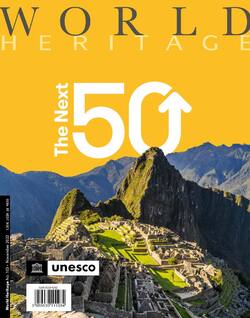During the conflict that tore apart the former Yugoslavia in the 1990s, the beautiful Old Bridge in Mostar, Bosnia and Herzegovina, was completely destroyed.
On 9 November 1993, after relentless shelling, the elegant structure disintegrated and fell into the Neretva River. The international community was appalled. Its reconstruction under the auspices of UNESCO represents a landmark event in heritage protection. It has set a precedent in peacebuilding processes and shows that our shared heritage can be a basis for social cohesion, inclusion and citizenship.
A jewel of Ottoman architecture, Stari Most (Old Bridge) was built in 1566 by a pupil of the great architect Sinan at the order of Sultan Suleiman the Magnificent. A 17th century explorer described it as a ‘rainbow arch’, ‘thrown from rock to rock as high as the sky’. Stari Most was a defining element of Mostar’s identity as an urban landscape, and its annihilation made it even more meaningful. The ruined bridge came to symbolize the senseless destruction of heritage in the modern world.
It also became a powerful symbol of reconciliation and human solidarity. The Old Bridge did not just provide a passage across the river, it was the ‘friendship bridge’ that linked the city’s diverse inhabitants – Bosnians, Croats, Serbs, Muslims, Jews and Orthodox Christians.
The idea of rebuilding appeared immediately after the bridge fell, in UNESCO’s Appeal on 10 March 1994 for ‘Reconstruction of the Stari Most’. The subject was discussed in a number of consultations between UNESCO and Bosnian experts. The big debate centred on authenticity: should the ruined bridge be preserved as a memorial, rebuilt with modern materials, or replicated to resemble the original as closely as possible? Finally, the people of Mostar and the Bosnian public wanted an exact replica, to reassert their desecrated values.
The project to rebuild the Old Bridge and restore its surroundings was launched at UNESCO in July 1998 as a partnership between UNESCO, the World Bank and the city of Mostar. A UNESCO-backed scientific committee, a Project Implementation Unit with local officials financed by the World Bank, and a Multi-Donor Trust Fund were set up under the Stari Most Foundation, created for that purpose.
The joint appeal by UNESCO, the World Bank and Mostar authorities was answered by five donor countries – Croatia, France, Italy, the Netherlands and Turkey – as well as the Council of Europe Development Bank. While the World Bank handled the financial organization and the city of Mostar disbursement of funds, UNESCO was mainly responsible for the technical and scientific coordination.
Work began in 1999 and continued until 2004. The scientific committee met every six months to supervise the design and reconstruction. The General Engineering Work Group from Florence and Omega Engineering from Dubrovnik conducted the research.
The stone blocks for the new bridge came from the same local quarry used in the 16th century for the original construction. At the end, the remnants of the old bridge and excavated medieval structures were put on display to preserve the multilayered memory of the site.
The Old Bridge Area of the Old City of Mostar was inscribed on the World Heritage List in July 2005, in the name of ‘human solidarity for peace and powerful cooperation in the face of overwhelming catastrophes’.

